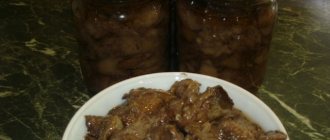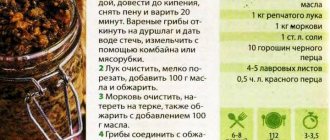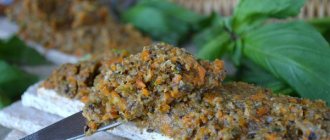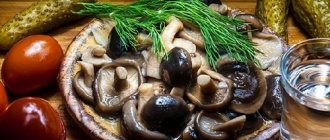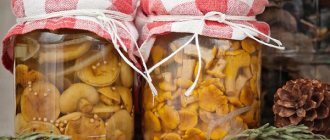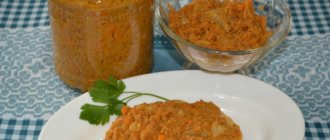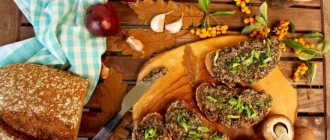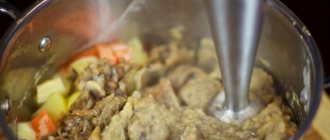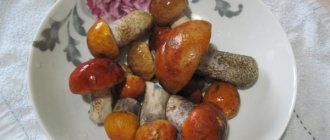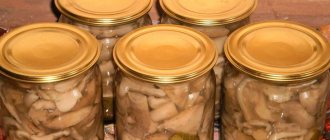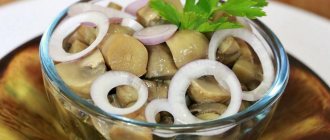Appearance
Finding the mushroom is quite easy. The main thing is to know its external features well:
| hat | The size varies between 3-10 centimeters in diameter. At the beginning of the life cycle it has a cone-shaped, conical cap. On top of it is a sharp conical tubercle. The edges of the cap are turned down. As the life cycle progresses, it acquires a more prostrate shape, the tubercle becomes more convex and noticeable (but this feature is not observed in all individuals). The color of the cap is ashen, gray, from light to dark, and may be brownish. This part may have fibers or be scaly. The cap feels silky to the touch. In the middle of the life cycle, the fibers may separate, and whitish pulp may be visible between them. Cracks may appear along the edge, which is normal. |
| Plates | Frequent, adherent, with considerable width. At the beginning of their life cycle, their color is white, over time it becomes gray, the shade is uneven at the edges. Some individuals acquire a yellowish tint to the plates with age. |
| Leg | The length can reach 10 centimeters, the thickness can be up to 2 centimeters. The leg is white and has a powdery coating. In structure it is quite fragile, smooth, thickened. In some specimens you can notice a ring zone. |
| Cover | In young mushrooms it is completely absent. In older specimens it has a gray tint, is thin in structure, and disappears quickly. |
| Pulp | In the cap it is thin-fleshy, in the leg it is brittle. The color is whitish, darker under the cap, with a gray tint. When damaged, the color does not change. |
The species has several analogues, including inedible ones. Therefore, it is worth collecting the mice carefully.
Spreading
The distribution area of the specimen is very wide, it can be found often. In Russia, mouse pups can be found in temperate and subtropical climates. She forms colonies. Most of them are in the following regions:
Rarely distributed in the southern regions. The reason for this is the fastidiousness of the species. It creates mycosis only with coniferous trees.
To bear fruit, the mushroom needs sandy, calcareous and loamy soil. For location, the mycelium prefers a coniferous or moss underlying surface. Individuals grow in a dense semicircle or in long, dense rows. You can find families in mixed and coniferous forests, park areas and forests.
The long active fruiting phase occurs in mid-autumn. Harvest before the onset of frost. In temperate climate zones – until December. In Crimea - until December, and in the Caucasus until November.
False doubles
The earthy row has several counterparts with which it is very easy to confuse it. All of them belong to the genus Ryadovka.
| Tiger row | It is the most dangerous analogue. It is highly toxic, poisonous and dangerous to people and animals. As a rule, it has larger dimensions. The cap can reach 15 centimeters, and the leg grows up to 18 centimeters. The mushroom grows in the same area as the earthy variety. |
| Row of Bona | The fruiting body of the specimen is smaller. The cap reaches only 2-5 centimeters, the leg is 3-5 centimeters in height and 4-10 millimeters in diameter. The spores are elongated and have scales. Nothing is known about the edibility of the species. Some consider it low quality, others consider it toxic. Mushroom pickers do not collect boom rows and do not use them for food. |
| Blushing row | It has similar dimensions: the cap reaches a diameter of 15 centimeters, the leg is 10 centimeters high. The hat has a burgundy-violet hue. The flesh is yellowish and turns red as the life cycle progresses. You can recognize a specimen by its hollow stem. The individual can be found in coniferous forests, but its distribution is very limited. Unlike many similar species of mice, the mushroom is edible. |
| Silver row | The cap usually does not grow more than 3-7 centimeters in diameter. The leg reaches 3-6 centimeters in height. The pulp is very fragile and brittle. It belongs to the edible species of rows, but has a mediocre taste and insignificant aroma. Used for making salt. |
Benefit
The earthy mushroom has a complex of beneficial properties. It affects the process of cell regeneration, removes toxins from the body and improves the tone of the gastrointestinal tract. The earthy row has all these properties due to its composition rich in vitamins and minerals. In him:
- Vitamin complex (betaine, vitamins A, C, PP, K).
- Mineral compounds: potassium, zinc, phosphorus, sodium, iron, manganese.
- Antibiotics of natural origin - clitocin and fomecin.
- Amino acids – lysine, threonine, glutamic acid, stearic acid.
Such a rich complex included in the product allows it to be used to normalize the body’s condition in the following pathological conditions:
- Blood pressure surges.
- Diseases of the central nervous system.
- Urinary tract diseases.
At the same time, rows are not always indicated for use. The mushroom can also cause harm, and therefore it is not recommended in the following cases:
- Low acidity.
- Cholecystitis.
- Pancreatitis.
- Ulcer.
- Gallbladder diseases.
- Kidney diseases.
- Liver diseases.
It is strongly recommended not to cut and eat mushrooms that are already overripe. They contain toxins collected from the environment and heavy metals. It is not recommended for preschool children, nursing mothers, and pregnant women to consume earthen row.
Excessive consumption of the product can lead to pain and intestinal upset even in healthy people. That is why you need to eat earthen row in moderation.
Beneficial features
Pine pods are a valuable food product. They have the following beneficial properties:
- antibacterial and antiviral;
- antioxidant;
- anti-inflammatory;
- immunostimulating.
The white-gray or greenish pulp contains valuable vitamins, microelements and enzymes. In terms of protein and mineral composition, mushrooms are close to meat, which is why they are used in vegetarian diets.
Edible pine trees are recommended for use by patients with diabetes and arterial hypertension. They also help normalize the functioning of the nervous system after overwork.
Edibility
It is generally accepted that the row has a weak taste, which is why it is not used for preparing gourmet dishes. But at the same time, the value of a specimen depends on the country in which it grows. Thus, in Catalonia, mice are considered one of the most common; they are often used in the preparation of classic dishes. In Europe, champignons are freely sold in stores in the same way as champignons in Russia.
On the Crimean peninsula, rowan is the most common mushroom, which is why local residents value it very much and use it everywhere in cooking. Despite the fact that it belongs to the fourth category, Crimeans prepare it by salting, boiling and frying, and add the product to salads, dumplings and pies.
In Bulgaria, the mushroom is practically not used. It is difficult to find on sale, but it can be collected in oak groves and forests, because there are almost no people willing to buy it. In Belarus it is rare and is greatly inferior to other representatives of the kingdom.
How to cook?
Despite the ordinary taste, far from refined, the earthy row has one positive property. The fact is that the structure of the mushroom can be preserved even during heat treatment. The shape of the fruiting body is not afraid of high temperatures and long-term storage. It does not disintegrate over time, and fiber does not appear in it. Thanks to this, the product is actively used in salting.
When properly prepared, the slightly spicy, spicy taste of the specimen is perfectly revealed and can decorate many dishes. But before cooking, mushrooms must be thoroughly cleaned of sand and soil. To do this, you need to rinse them in cold water, after soaking them for 30-40 minutes.
The next stage of preparation is cooking. Mushrooms do not require aggressive heat treatment. Just bring the water to a boil and you can remove the pan from the heat. Boiling is necessary so that small impurities are finally removed from the fruiting bodies and settle at the bottom of the pan with boiling water. After cooking, the structure of the product is transformed. The mushrooms become more elastic, the fragility goes away.
Where and when does it grow
From the end of August until the frosts in November, a quiet hunt begins for the sulfur row. It grows in groups, stripes or so-called “witch circles”.
Having found mushrooms, you need to look around carefully; often the next fruitful clearing is located very nearby.
They must be cut very carefully so as not to damage the mycelium in the soil, then you can come to the same place a couple more times during the season.
After rain, in warm weather, the mushroom body forms in just a few days.
Like a number of other forest mushrooms, the gray row mushroom can be cultivated in a personal plot. To do this, you must adhere to the following requirements:
- The planting bed must meet the following parameters: shaded (closed from direct sunlight); since it is believed that the row forms mycorrhiza with pine, it is desirable that these conifers grow nearby; moderately damp. Important! She needs shelter from the rain.
- The air temperature during the period of mycelium development should not be below 15℃, and the soil temperature should not be below 20℃.
- You can sow the bed with spores or mycelium and cover it with substrate on top.
- A ready-made substrate for champignons is perfect for the development of mycelium.
- Mushrooms can be collected if the caps have become more or less flat.
- After each collection of fruiting bodies, a new layer of soil 5 cm thick is poured onto the bed.
- For the winter, the bed must be covered with agrofibre, which is covered with a layer (10 cm) of leaves or straw. The shelter is prepared when the temperature drops below 5℃.
The gray Ryadovka mushroom is a typical autumn specimen; it appears in pine forests and old plantings (with an admixture of pine), after the first rains. It grows on sandy soil.
How long to cook baby mushrooms
Baby mouse mushrooms got their unusual and very touching name for the gray color of their caps.
In fact, this is nothing more than a gray row, or white mushroom, as this mushroom is also called. There are a sufficient number of options for preparing this mushroom. It is boiled, fried with onions and potatoes, and also pickled. And any dish made from little mouse mushrooms can decorate not only an everyday feast, but also a festive table.
The baby mouse mushrooms should be boiled for 30 – 40 minutes.
Moreover, experienced housewives recommend doing it as follows. Initially, the mushrooms should be cleaned of dry debris, then rinsed thoroughly under cold water and cooked. Boil the baby mouse mushrooms for 10 - 15 minutes, then drain the water, add new water and boil for 20 - 25 minutes until tender. Before starting the second cooking, you can put the whole carrot and onion in the water. Vegetables will add a special flavor to your dish.
If you want to boil baby mouse mushrooms for subsequent frying, then the first cooking for 10 - 15 minutes will be enough.
The baby mouse mushrooms should be boiled for 30 – 40 minutes.
So, it is quite obvious that knowing how long to cook baby mouse mushrooms, you will be able to prepare mushroom dishes correctly and tasty. And, believe me, your efforts will be appreciated by your household.
Source
Application
“Little mice,” like other well-known edible mushrooms, have become widespread. They are used in cooking. It is important to prepare the serushki correctly in order to improve the taste and at the same time maintain the structure. Pine trees are also used in folk medicine.
Use in cooking
Young pine trees are consumed fried, stewed, salted, and pickled. They are also added to soups and mushroom sauces are made from them. Dried earrings add an interesting piquant aroma to meat dishes. Old pine trees that have survived frost are also used for food. This does not affect the taste, so the mushrooms can be frozen, making a supply of mushrooms for the winter.
Mushrooms are used in cooking
Mushroom pickers recommend soaking collected fresh earrings in cool, clean water. Then peel the skin from the cap and boil for 15 minutes.
Irina Selyutina (Biologist):
Indeed, to prevent the finished dish from becoming bitter, before cooking the rows are soaked in cold water for 2 hours and citric acid is added at the tip of a knife. Then the mushrooms are washed and boiled for 15-20 minutes after boiling. If, in your opinion, the mushroom aroma emanating from the serushka is sharp, then add bay leaf and allspice to soften it.
The finished product is discarded in a colander, allowed to drain and prepared according to the chosen recipe.
Use in folk medicine
The wide distribution of earrings in folk medicine is due to their chemical composition and beneficial effects on the body. They are used in the treatment of mental disorders, liver and kidney diseases. In official medicine, antibiotics are extracted from mushroom extracts. In cosmetology, powdered fruiting bodies of serushki are used to treat acne, as well as normalize the activity of the sebaceous glands.
Decoctions are prepared at home. They are taken orally to prevent fatigue, headaches, and increase the body's resistance during periods of mass epidemics. For external use, decoctions are used in the treatment of skin diseases. Lotions eliminate itching, redness, and improve skin condition.
Preparing mice for marinating
Little mice or gray rows are mushrooms that are classified as conditionally edible. They can be consumed only after preliminary preparation, consisting of prolonged soaking and heat treatment.
This preparation not only improves the taste of the mice, but also makes them absolutely safe for health:
- Clean the collected mice from plant debris, pine needles, grass and soil particles.
- Cut off the lower part of the leg - it is unfit for consumption.
- Rinse the collected mushrooms several times under running water, then sort by size. Cut large mice in half or into 3-4 parts; small mushrooms can be marinated whole.
- Before marinating the baby mice, you need to soak them - to do this, pour the mushrooms into a large saucepan or basin, fill with ice water and leave for 2 days in a cool place.
- After soaking, rinse the mice again under running water, then peel the caps and carefully remove the film from the bottom part.
Before marinating, the baby mouse mushrooms need to be boiled.
Pour the soaked mushrooms into a saucepan and fill with cool water with added table salt (6-7 g per 1 liter). Boil for at least 35-45 minutes, remembering to skim the foam from the surface of the water. When the mice sink to the bottom of the pan, pour them into a colander. When the liquid has drained, the mushrooms are ready for pickling.
Cooking steps:
1) Gray row - the mushroom is very delicate and breaks easily. Therefore, before cleaning them, the mushrooms should be doused with boiling water. The row becomes less fragile. Then remove needles, soil, leaves and rinse in running water. Clean mushrooms must be boiled for at least 15 minutes, then removed from the broth, allowed to drain and cut into strips.
2) While the mushrooms are draining, prepare the onion, since the smell of fried onions goes well with the mushroom, complementing it with an extraordinary aroma. Peel the onion from the golden peel, wash and chop, then lightly fry in sunflower oil. Without bringing the onion to readiness, add chopped mushrooms and fry until done.
3) Salt the mushrooms and onions, add a spoonful of sour cream and chopped dill, stir, let simmer for 5 minutes over low heat and serve. Fried mushrooms have the right to exist as an independent dish, as an appetizer, can be served with a side dish (boiled potatoes, pasta, rice, buckwheat, etc.), and can be used as a filling for pies.
